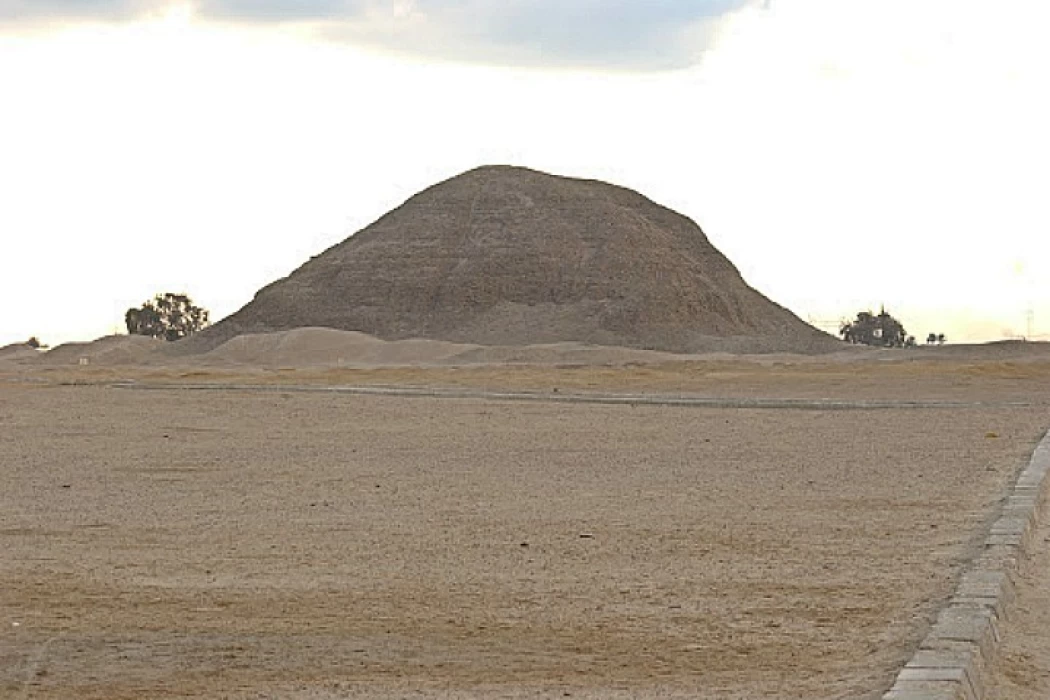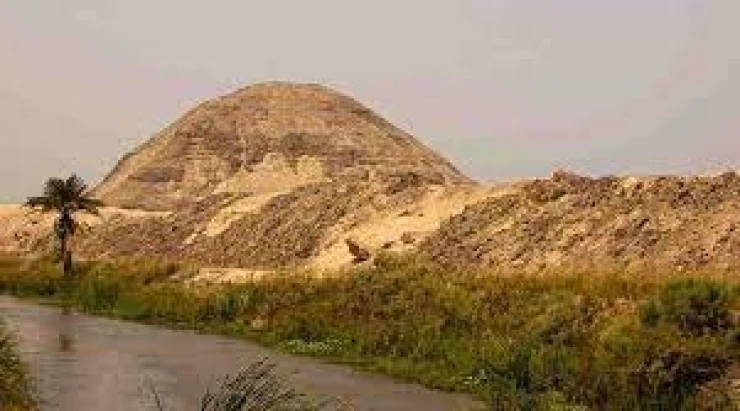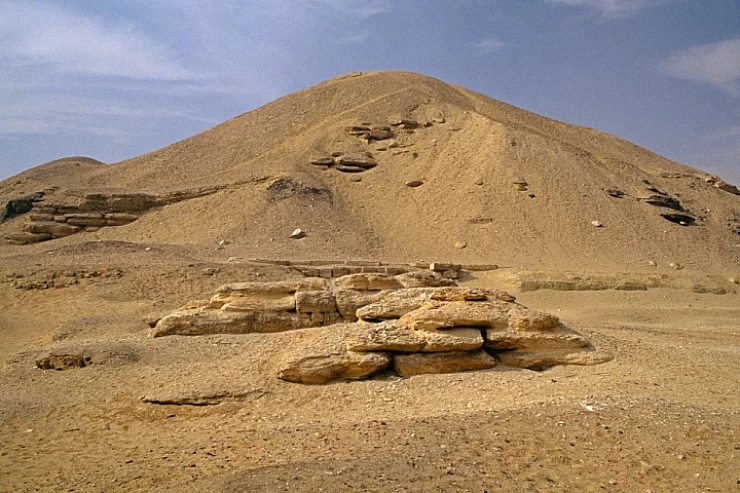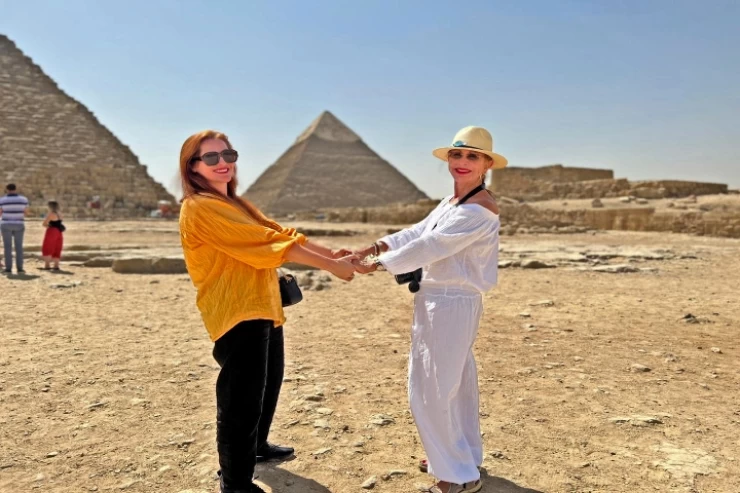
The Hawara Pyramid Archaeological Site
The Hawara Pyramid Archaeological
The Pyramid of Hawara is one of the pyramids of Egypt and was built by the Pharaoh of Egypt Amenemhat the Third of the Kings of the twelfth dynasty of the Middle Kingdom in the village of Hawara, 9 km southeast of the city of Fayoum, which is of mud-brick covered with limestone.
The original height of the pyramid was 58 meters and the length of each side was 105 meters, after the erosion because of the ravages of time only 20 meters of its height now remains, and the pyramid contains many vestibules and rooms, ending in the burial chamber, and found a huge stone sarcophagus of one piece of quartzite stone weighing up to 110 tons, and The door of the room was closed with a huge stone, which fell falling by leaking sand under it to two small side rooms.
The thieves were unable to enter the coffin room from this door, but they managed to reach it through an opening in the ceiling, and they looted and burned the funerary furniture in it.
King Amenemhat the Third began building his second pyramid in the 15th year of his reign and gave it the name “Amenemhath Ankh” which means Amenemhat lived. The angle of the pyramid's slope has grown to 5 and 48 degrees.
The outer covering of the pyramid was built as usual from limestone, but the pyramid lost that coverage in ancient times, then climate erosion came on the main body of the pyramid.
The height of the pyramid was essentially 58 meters and what remains of it now is about 20 meters, it is considered the last pyramid to be built during the era of the Pharaohs of this large size.
The groundwater is still submerging the bottom and entrance of the pyramid for 20 years until now, and no responsible party, whether the Antiquities Authority or the Ministry of Irrigation, has been able to pump this water up to now, given that the matter requires transporting one of the canals near the pyramid, which was the reason for the leakage of this water to the bottom of the pyramid.


















